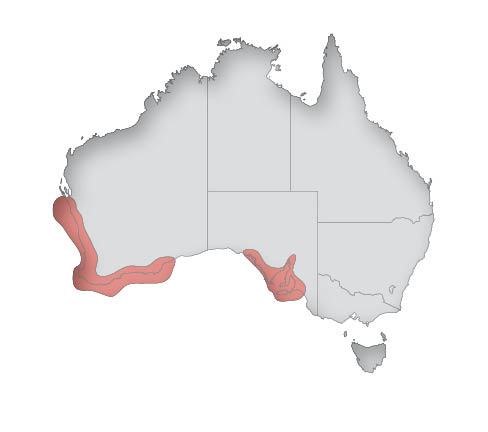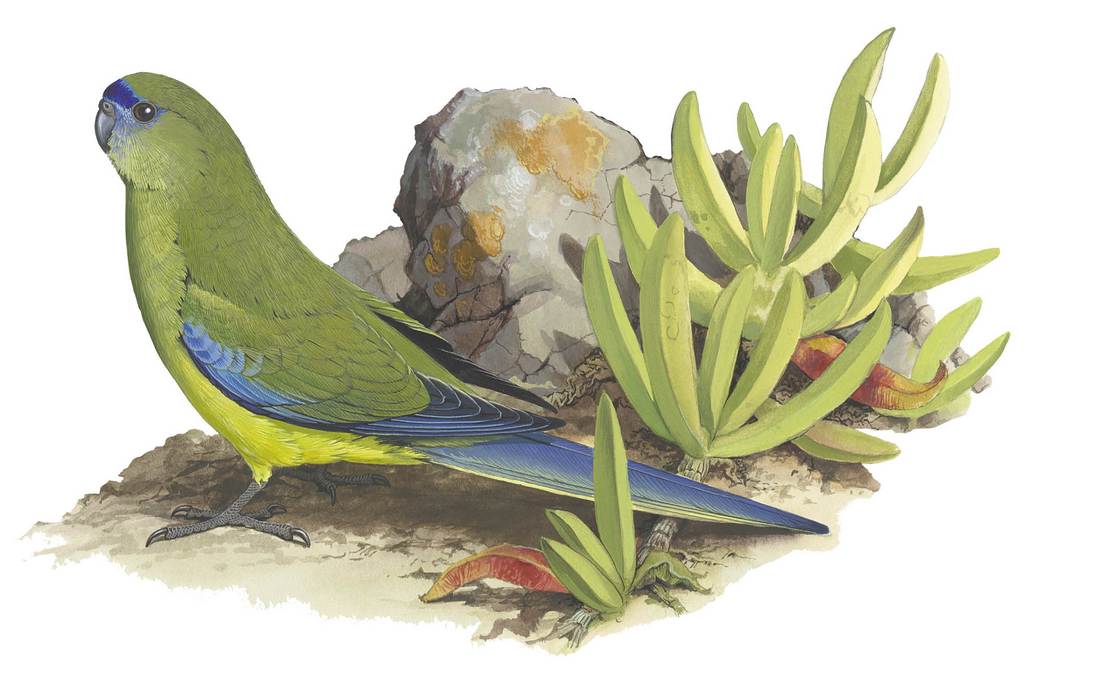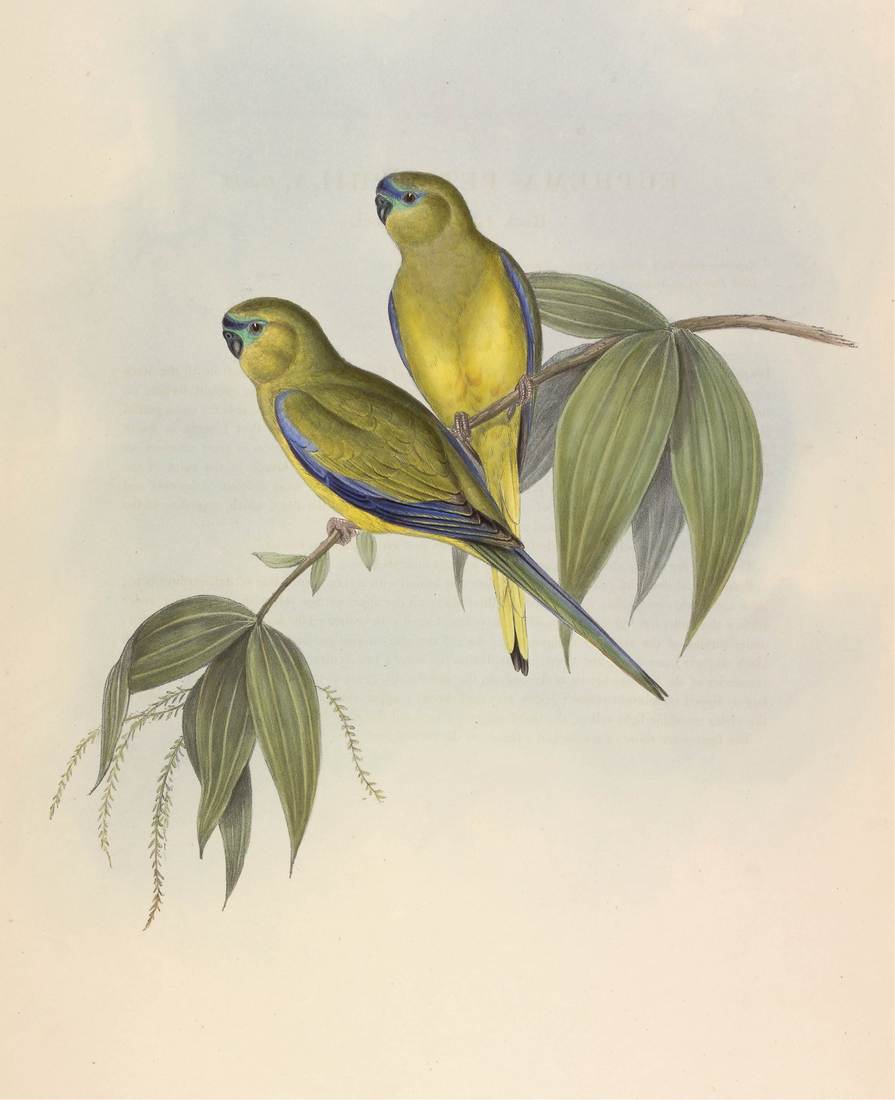

Rock Parrot
Neophema petrophila
John Gould was the first to describe the species, in 1841.
Neophema combines the Greek neos (new or different) and euphema, a generic name no longer in use, itself derived from the Greek euphemos (auspicious or laudatory); petrophila combines the Greek petros (rock) with philos (loving).

William T. Cooper, Rock Parrot (Neophema petrophila) 1970 (adult male)

John Gould (artist), Henry Constantine Richter (lithographer), Euphema petrophila (Rock Grass-Parrakeet) 1848